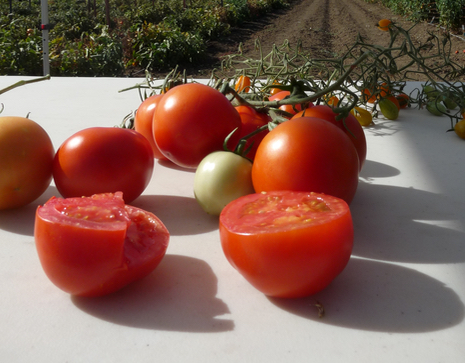Managing DiMare Fresh Tomatoes
Season Starting for DiMare Fresh Tomatoes
By Patrick Cavanaugh, Farm News Director
DiMare Fresh is a fresh market tomato company with operations throughout California. California Ag Today spoke recently to Brian Souza, who is the in-house pest control advisor, among other things, for the company.
Souza explained how he manages the work throughout the state: “We start down south and work our way north as the season progresses. Other than being a PCA, I start in the greenhouses and manage our transplants, and just work from there.”
“We also schedule all the plantings, and manage the crops, and myself and another PCA walk the fields two times to four times a week. We always have someone in the fields every day looking, because … fresh market is sensitive, and they definitely need a lot of attention,” he said.
“We have great team members, and communicate constantly. We’re always in different areas at different times, so if there’s something I’m missing the other guys hopefully catch it, and that’s usually the case. It’s a lot of good communication and team work,” he said.
DiMare Fresh does not grow any tomatoes, but they manage a lot of growers who grow for the company.
“DiMare doesn’t own any of the property, but we do have growers that grow for us. And they are very loyal growers that we’ve had for 20, 30, 35 years.
All the rain this winter certainly can be a game changer for companies like DiMare. “We are one of the first tomato companies to start planting,” Souza said. “We love these rains, but it does bring challenges getting in as early as we normally would like to do. Sometimes we’ll have to just chance it and get our stuff in if we can.
Rains also means a lot of weeds in those fields. “For sure, there’s a lot of weeds out there, and especially with the drought we’ve noticed some newer weeds that are taking over, that are a little more drought tolerant. Horseweed and hairy fleabane are the most prominent,” Souza said.











